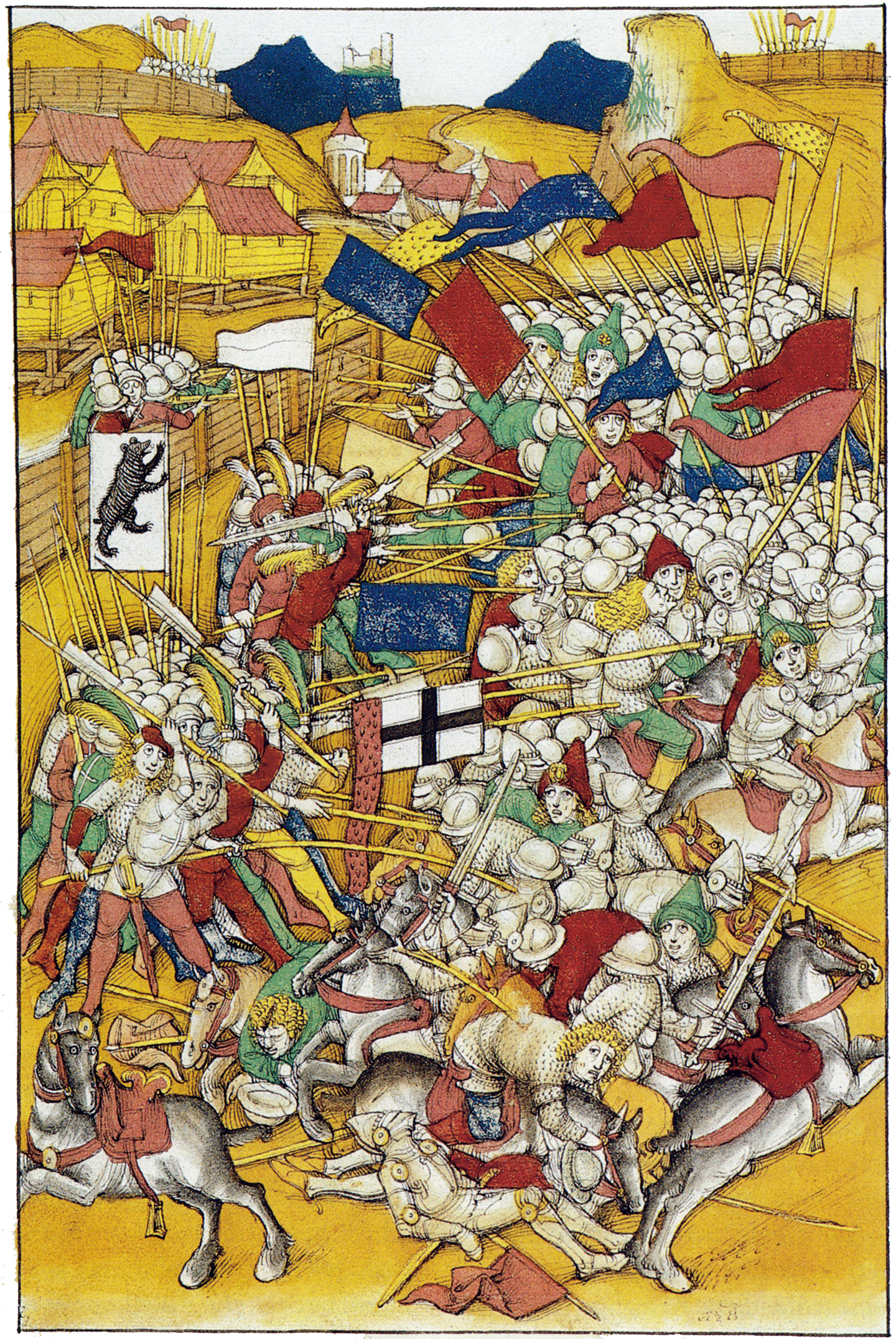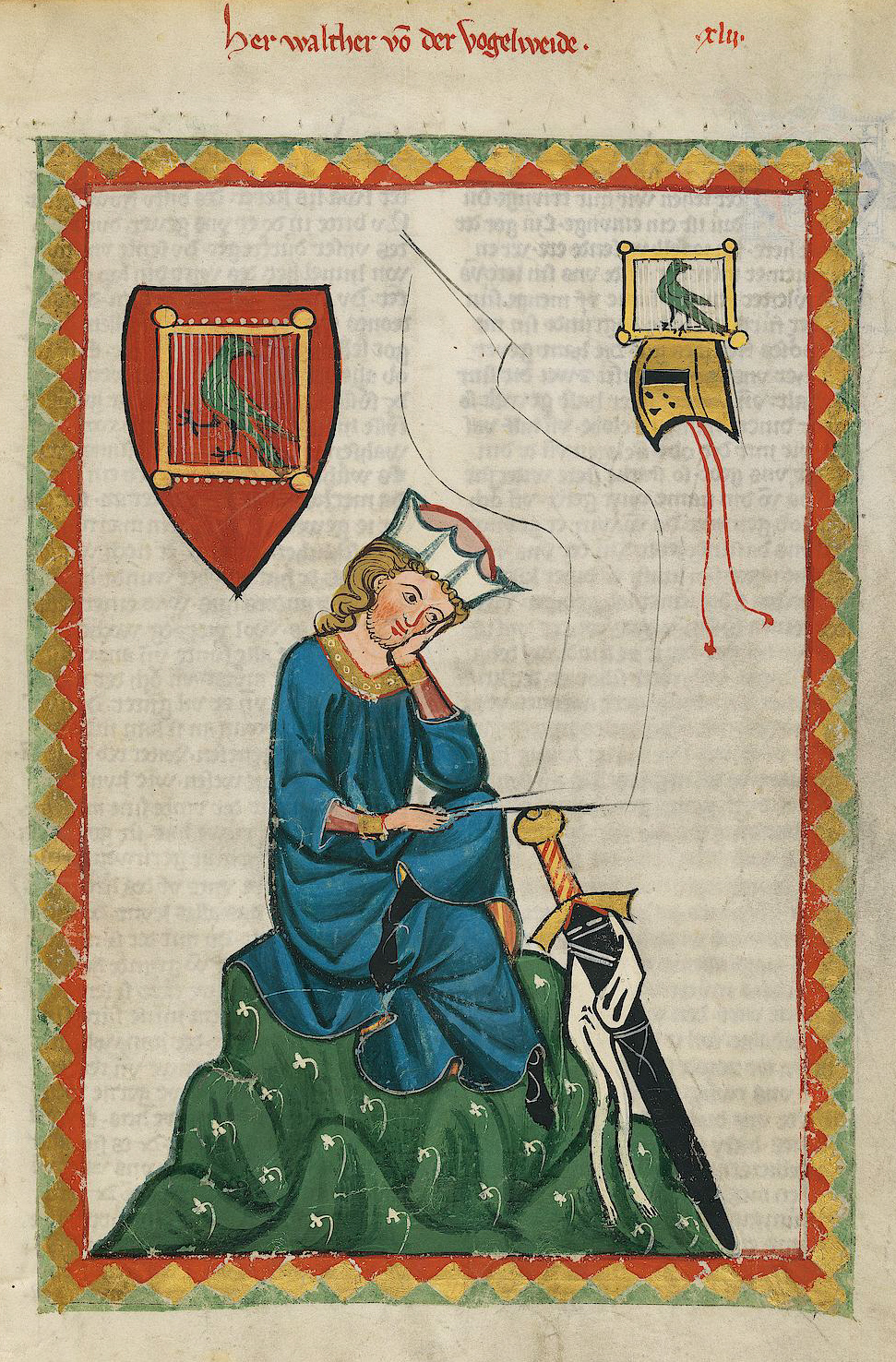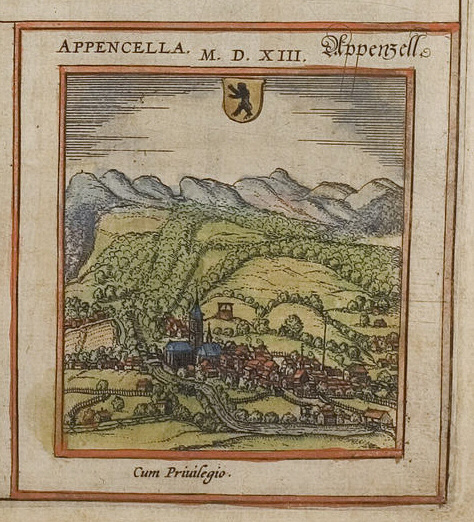|
Clanx
Clanx Castle (german: Ruine Clanx) is a ruined castle in the Appenzell District of the canton of Appenzell Innerrhoden in Switzerland. History The castle is first mentioned in 1219 as ''in arce Clanx'', named after the Sax family holding in the Calanca valley. It was built by the Abbot of St. Gall Ulrich von Sax (1204–20) and his brother, the Abbey-Vogt Heinrich. The castle quickly became the center of the Abbey's lands in Appenzell. In 1236 Heinrich's uncle, the famous knight and minnesänger Heinrich III von Sax, took over the castle. During a contested election for Abbot of St. Gall in 1272, Ulrich von Güttingen received support from the Habsburgs in exchange for a promise to take the castle and lands away from the Sax family. Two years later, in 1274, Heinrich III was forced out and the Habsburg knight Ulrich von Ramschwag was given the castle. In 1277 Abbot Rumo von Ramstein traded Blatten Castle and other estates with Ulrich von Ramschwag, bringing Clanx back under ... [...More Info...] [...Related Items...] OR: [Wikipedia] [Google] [Baidu] |
Appenzell (village)
Appenzell is a village, a town, and the capital of the canton of Appenzell Innerrhoden in Switzerland. Appenzell has no municipal government of its own; rather, the different parts of Appenzell belong to and are governed by the districts (and municipalities) Appenzell, Schwende and Rüte. Because of that, for firefighting, energy and water, the village Appenzell has a special-purpose municipality, the Feuerschaugemeinde. History In 1071 the village was referred to as ''Abbacella''. By 1223 this changed to ''Abbatiscella'', meaning the Abbot's cell. This refers to the abbot of the Abbey of Saint Gall. The buildings in the village core, the parish church, the 1563 town hall, the ''Salesis'' house, the ruins of Castle Clanx and the state archives with the administration building are listed as heritage sites of national significance. Notable people * Roman Signer (born 1938 in Appenzell) a visual artist who works in sculpture, art installations photography, and video. G ... [...More Info...] [...Related Items...] OR: [Wikipedia] [Google] [Baidu] |
List Of Castles And Fortresses In Switzerland
This list includes castles and fortresses in Switzerland. Entries list the name and location of the castle, fortress or ruins in each Canton in Switzerland. Aargau Appenzell Ausserrhoden Appenzell Innerrhoden Basel-Landschaft, Basel-Land Basel-Stadt Canton of Bern, Bern Canton of Fribourg, Fribourg Canton of Geneva, Geneva Canton of Glarus, Glarus Graubünden, Graubünden (Grisons) Canton of Jura, Jura Canton of Lucerne, Lucerne Canton of Neuchâtel, Neuchâtel Nidwalden Obwalden Canton of Schaffhausen, Schaffhausen Canton of Schwyz, Schwyz Canton of Solothurn, Solothurn Canton of St. Gallen, St. Gallen Ticino Thurgau Canton of Uri, Uri Vaud Valais Canton of Zug, Zug # Buonas Castle, Risch # Freudenberg Castle (Rotkreuz), Freudenberg Castle, Risch-Rotkreuz # Hünenberg Castle, Hünenberg # St. Andreas Castle, Cham, Switzerland, ... [...More Info...] [...Related Items...] OR: [Wikipedia] [Google] [Baidu] |
Ulrich Von Sax
Ulrich von Sax (born before 1204; died 23 September 1220) was Abbot of Saint Gall from 1204 until his death. Life Ulrich descended from the House of Sax who had property in eastern Switzerland. He was the son of Albrecht von Sax. After his studies in Paris and Bologna, he became portarius (en. "doorman") in Saint Gall and was elected abbot on 18 December 1204. Ulrich probably received the ''jura regalia'' from King Philip. He supported his brother Heinrich in his battle against Hugo I of Montfort. Ulrich awarded his brother Heinrich the bailiwick over the abbey, which we had accroached after Philip's death. However, after Otto IV had established himself as king, Ulrich's brother had to release the bailiwick again. In 1208, a dispute arose with Werner von Staufen, the Bishop of Konstanz, concerning Castle Rheineck. The dispute ended with Ulrich's defeat at Breitfeld. The chapel on the former battle field commemorates the bloodshed. When Frederick II from the Hohenstaufen fami ... [...More Info...] [...Related Items...] OR: [Wikipedia] [Google] [Baidu] |
Appenzell (district)
Appenzell District is a district of the canton of Appenzell Innerrhoden in Switzerland. It has a population of (). The area of Appenzell is . The district of Appenzell consists of a part of the village Appenzell, as well as Rinkenbach, Kau and Meistersrüte. History Prehistoric Appenzell While a single late Bronze Age site has been discovered in the forest outside Appenzell, there is no evidence of a prehistoric settlement. The region around Appenzell remained forested and very lightly settled until the end of the Early Middle Ages. Under the Abbots of St. Gall Under the authority of the abbots of the monastery of St. Gall settlers began to colonization of the Sitter river valley in the late 11th century. It is mentioned, in a deed granting rights to clear land, in 1071 as ''Abbacella''. At the same time, the parish of St. Mauritius was established. By 1200, the parish included the area of the modern district as well as villages of Brenden, Lank, Lehn and Meistersrüte. The ... [...More Info...] [...Related Items...] OR: [Wikipedia] [Google] [Baidu] |
Ulrich Von Güttingen
Ulrich von Güttingen (died 14 February 1277) was the abbot of the Abbey of Saint Gall from 1272 until his death.Werner Vogler, Ulrich came from a baronial family of the Thurgau. He was a relative of the earlier abbot Rudolf von Güttingen.Johannes DuftAbt Ulrich von Güttingen (1272–1277) ''Die Abtei St.Gallen'' (St. Gallen, 1986). He is not mentioned in any surviving source before his election as abbot in 1272. Ulrich was elected by only a minority of monks, the majority choosing Heinrich von Wartenberg. He did have the support, however, of the ministerials and burghers of the town of Saint Gall. The disputed election was followed by armed conflict. Although Ulrich emerged victorious, the abbey was ruined. When Heinrich von Wartenberg died unexpectedly during the feud, his followers elected Rumo von Ramstein as the new abbot. The abbey thus again had two abbots. The feud concerning the legitimacy of the abbacy continued throughout Ulrich's tenure, but was somewhat lessened i ... [...More Info...] [...Related Items...] OR: [Wikipedia] [Google] [Baidu] |
Appenzell Wars
The Appenzell Wars (german: Appenzeller Kriege) were a series of conflicts that lasted from 1401 until 1429 in the Appenzell region of modern-day Switzerland. The wars consisted of uprisings of cooperative groups, such as the farmers of Appenzell or the craftsmen of the city of St. Gallen, against the traditional medieval power structure represented by the House of Habsburg and the Prince-Abbot of the Abbey of St. Gall. The conflict was one of a number of popular revolts in late-medieval Europe. It resulted in greater autonomy for Appenzell and its association with the Old Swiss Confederacy, of which it would become a member ( canton) in 1513. Background Appenzell (the name in la, abbatis cella means "cell (i.e. estate) of the abbot") had been under the personal control of the abbot of St. Gall. While the Prince-Abbot appointed agents or bailiffs, the communities in Appenzell were governed by a council appointed by the ''Landsgemeinde'', in which every citizen could vote. The ... [...More Info...] [...Related Items...] OR: [Wikipedia] [Google] [Baidu] |
Blatten Castle
Blatten may refer to: * Blatten bei Naters, a ski resort and village in the municipality of Naters in the Swiss canton of Valais * Blatten (Lötschen) Blatten is a village and municipality in the Lötschental valley in the canton of Valais in Switzerland. It is part of the district of Westlich Raron, and much of the municipality lies within the Jungfrau-Aletsch protected area, a World Herita ..., a village and municipality in the Lötschental valley in the Swiss canton of Valais * Blatten (Lucerne), a hamlet in the municipality of Malters in the Swiss canton of Lucerne {{geodis ... [...More Info...] [...Related Items...] OR: [Wikipedia] [Google] [Baidu] |
House Of Habsburg
The House of Habsburg (), alternatively spelled Hapsburg in Englishgerman: Haus Habsburg, ; es, Casa de Habsburgo; hu, Habsburg család, it, Casa di Asburgo, nl, Huis van Habsburg, pl, dom Habsburgów, pt, Casa de Habsburgo, la, Domus Habsburg, french: Maison des Habsbourg and also known as the House of Austriagerman: link=no, Haus Österreich, ; es, link=no, Casa de Austria; nl, Huis van Oostenrijk, pl, dom Austrii, la, Domus Austriæ, french: Maison d'Autriche; hu, Ausztria Háza; it, Casa d'Austria; pt, Casa da Áustria is one of the most prominent and important dynasties in European history. The house takes its name from Habsburg Castle, a fortress built in the 1020s in present-day Switzerland by Radbot of Klettgau, who named his fortress Habsburg. His grandson Otto II was the first to take the fortress name as his own, adding "Count of Habsburg" to his title. In 1273, Count Radbot's seventh-generation descendant Rudolph of Habsburg was elected King of the ... [...More Info...] [...Related Items...] OR: [Wikipedia] [Google] [Baidu] |
Vogt
During the Middle Ages, an (sometimes given as modern English: advocate; German: ; French: ) was an office-holder who was legally delegated to perform some of the secular responsibilities of a major feudal lord, or for an institution such as an abbey. Many such positions developed, especially in the Holy Roman Empire. Typically, these evolved to include responsibility for aspects of the daily management of agricultural lands, villages and cities. In some regions, advocates were governors of large provinces, sometimes distinguished by terms such as (in German). While the term was eventually used to refer to many types of governorship and advocacy, one of the earliest and most important types of was the church advocate (). These were originally lay lords, who not only helped defend religious institutions in the secular world, but were also responsible for exercising lordly responsibilities within the church's lands, such as the handling of legal cases which might require the u ... [...More Info...] [...Related Items...] OR: [Wikipedia] [Google] [Baidu] |
Minnesänger
(; "love song") was a tradition of lyric- and song-writing in Germany and Austria that flourished in the Middle High German period. This period of medieval German literature began in the 12th century and continued into the 14th. People who wrote and performed ''Minnesang'' were known as ''Minnesänger'' (), and a single song was called a ''Minnelied'' (). The name derives from ''minne'', the Middle High German word for love, as that was ''Minnesang'''s main subject. The ''Minnesänger'' were similar to the Provençal troubadours and northern French ''trouvères'' in that they wrote love poetry in the tradition of courtly love in the High Middle Ages. Social status In the absence of reliable biographical information, there has been debate about the social status of the ''Minnesänger''. Some clearly belonged to the higher nobility – the 14th century Codex Manesse includes songs by dukes, counts, kings, and the Emperor Henry VI. Some ''Minnesänger'', as indicated by the ... [...More Info...] [...Related Items...] OR: [Wikipedia] [Google] [Baidu] |
Appenzell District
Appenzell District is a district of the canton of Appenzell Innerrhoden in Switzerland. It has a population of (). The area of Appenzell is . The district of Appenzell consists of a part of the village Appenzell, as well as Rinkenbach, Kau and Meistersrüte. History Prehistoric Appenzell While a single late Bronze Age site has been discovered in the forest outside Appenzell, there is no evidence of a prehistoric settlement. The region around Appenzell remained forested and very lightly settled until the end of the Early Middle Ages. Under the Abbots of St. Gall Under the authority of the abbots of the monastery of St. Gall settlers began to colonization of the Sitter river valley in the late 11th century. It is mentioned, in a deed granting rights to clear land, in 1071 as ''Abbacella''. At the same time, the parish of St. Mauritius was established. By 1200, the parish included the area of the modern district as well as villages of Brenden, Lank, Lehn and Meistersrüte. The ... [...More Info...] [...Related Items...] OR: [Wikipedia] [Google] [Baidu] |
Abbot Of St
Abbot is an ecclesiastical title given to the male head of a monastery in various Western religious traditions, including Christianity. The office may also be given as an honorary title to a clergyman who is not the head of a monastery. The female equivalent is abbess. Origins The title had its origin in the monasteries of Egypt and Syria, spread through the eastern Mediterranean, and soon became accepted generally in all languages as the designation of the head of a monastery. The word is derived from the Aramaic ' meaning "father" or ', meaning "my father" (it still has this meaning in contemporary Hebrew: אבא and Aramaic: ܐܒܐ) In the Septuagint, it was written as "abbas". At first it was employed as a respectful title for any monk, but it was soon restricted by canon law to certain priestly superiors. At times it was applied to various priests, e.g. at the court of the Frankish monarchy the ' ("of the palace"') and ' ("of the camp") were chaplains to the Merovingian and ... [...More Info...] [...Related Items...] OR: [Wikipedia] [Google] [Baidu] |






